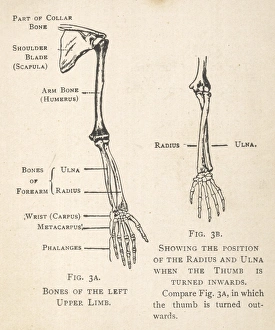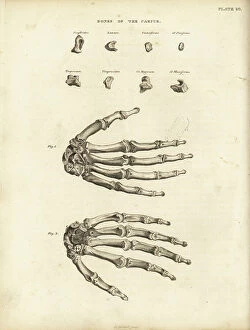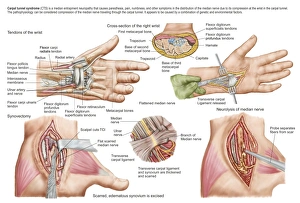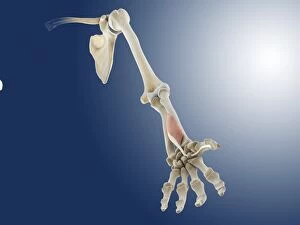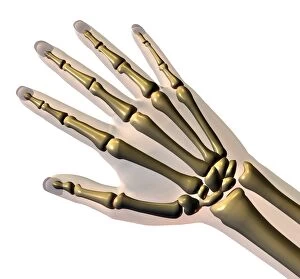Carpus Collection
The carpus, also known as the wrist, is a complex structure consisting of multiple bones and ligaments that play a crucial role in hand and arm movement
All Professionally Made to Order for Quick Shipping
The carpus, also known as the wrist, is a complex structure consisting of multiple bones and ligaments that play a crucial role in hand and arm movement. To understand the carpus better, let's take a closer look at its anatomy. Diagrams of the bones of the hand and arm reveal the intricate arrangement of these skeletal components. On the dorsal surface of the left hand, we can see engravings showcasing each bone's position and relationship to one another. Not limited to human anatomy alone, even eagles possess a similar structure. A skeleton engraving after Milne-Edwards demonstrates how an eagle's carpus supports their powerful wings for flight. Examining further, illustrations depicting both palmar surface and medical views show us different aspects of this vital joint. One such illustration highlights carpal tunnel syndrome—a condition where pressure on nerves within the wrist causes pain or numbness. Artwork showcasing wrist joint anatomy provides insight into how various structures come together to enable flexion, extension, abduction, adduction, and circumduction movements. Ligaments are essential for stabilizing joints like the carpus; artwork focusing on wrist ligaments reveals their locations and functions in supporting this complex joint. Additionally, thumb muscles' artwork sheds light on how specific muscle groups contribute to gripping objects with precision while forearm muscle illustrations demonstrate strength during activities involving wrist extension or flexion. Understanding these components helps us appreciate how interconnected our bodies truly are—muscles throughout our body work harmoniously with those specifically dedicated to hand function. Exploring diagrams of hand bones alongside engravings depicting both human wrists affected by carpal tunnel syndrome allows us to grasp just how intricate yet vulnerable this region can be. The study of carpal anatomy not only enhances our knowledge but also emphasizes its significance in everyday tasks requiring dexterity or forceful actions alike.

